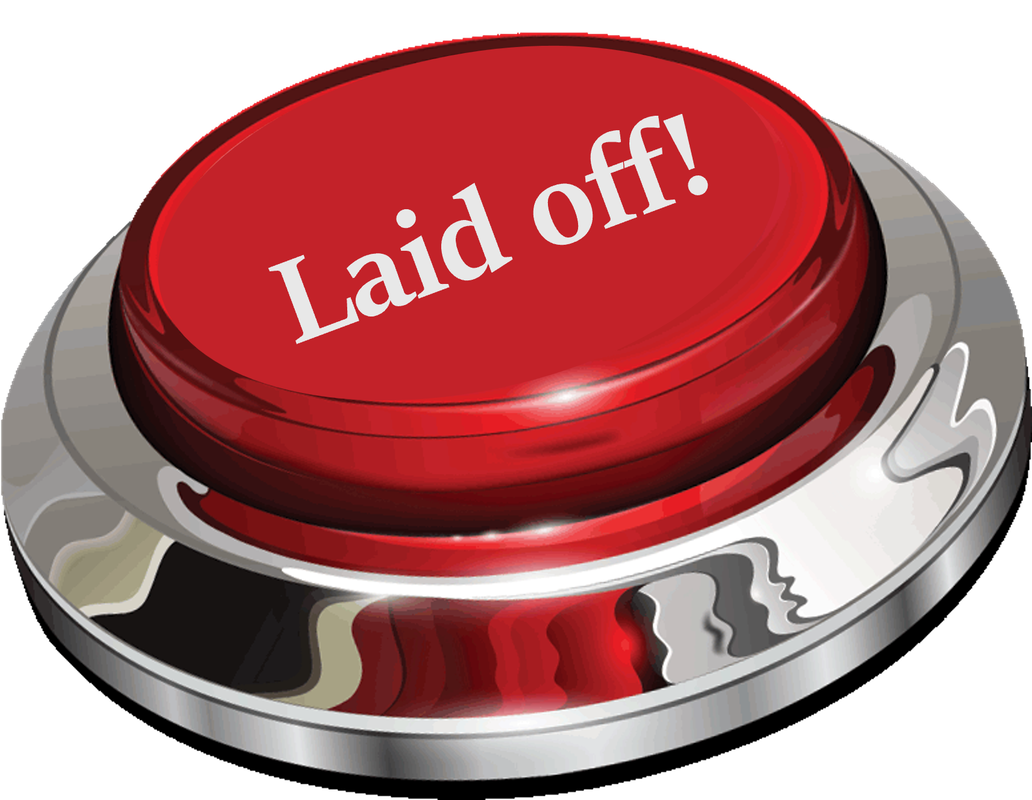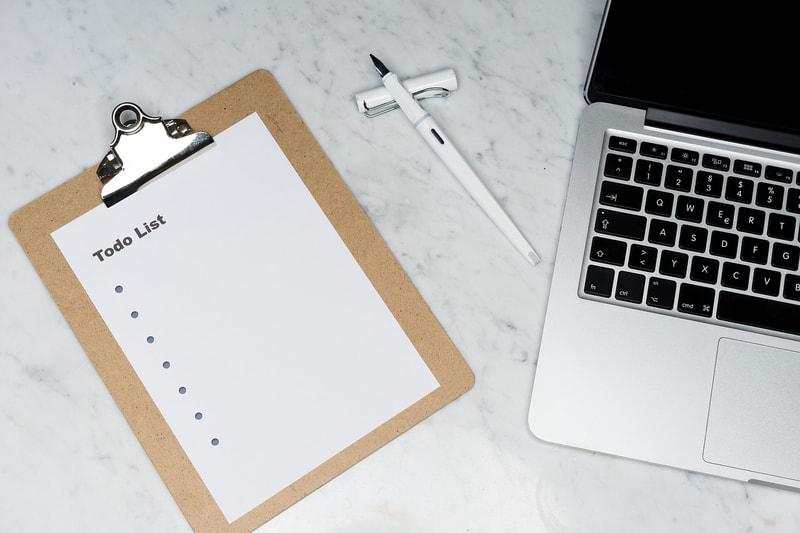|
By Brenda L. Peterson, The Layoff Lady Rejection and Negative EmotionsBeing jobless post-layoff and searching for a new role is a rough process riddled with rejection. It starts with your former employer kicking you out of the whole company and, in essence, saying, “You are no longer one of us.” At every step of the way, you’ll experience people telling you no in a variety of ways. Here is how that rejection may look. Applying for a job and:
Having what felt like a great interview for a job and:
Receiving a job offer and:
Accepting a job offer and:
The Necessity of Experiencing Your Emotions Because of all of the uncertainty and rejection, this whole process can be a lot to bear. It’s hard to keep going when there are obstacles at every turn. Sometimes, even well-intentioned people trying to be supportive ask just the wrong question and make you feel even worse. Often, I find that when people are exceedingly negative, they usually have not taken the time to address their emotions. Consequently, those hard feelings fester, come out sideways, and interfere with the business part of job searching. Their complaining comes from a place of fear, pain, sadness, and anger. Unfortunately, as with much of life, it’s nearly impossible to complain your way out of your current situation and into a better one. Instead, it’s paramount that you experience your emotions, then manage your mindset so you don’t let your feelings make the already complicated process of finding a new job even harder. Coping StrategiesHere are a few ideas for strategies to help you work through the unpleasant emotions that will pop up during your career transition. Acknowledge Each EmotionBefriend your feelings. Don’t pretend that you don’t feel how you do. Name them, acknowledge them, and then move on. Pretending those unpleasant feelings don’t exist will not make them disappear. Instead, it may silence them for a bit, but they will pop up later, usually at the worst possible time. Acknowledging each one will help them run their course–and also help you to increase your ability to manage those feelings. Wallow a Little It’s impossible to will yourself into feeling better. Sometimes, you need to just sit with an uncomfortable feeling for a while and let it run its course. Cry a little. Rewatch your favorite movie for the bijillionth time. Have a little ice cream. Do a puzzle. Take a walk. Take the afternoon off from your to-do list. Some will run their course a bit more quickly than others. Research The ProblemIf you’re worried about something, researching answers and managing your expectations often helps. How many job applications does it typically take to get an interview? How long does it take most people to find a new role post-layoff? Which companies are hiring? You'll probably feel a little better by researching options, clarifying goals, and taking useful action. Even if you don’t find a complete solution, you at least know more. Having added knowledge will help you worry less or at least direct your worry toward taking productive action that will help you solve a problem. Take a Social Media BreakSocial media, specifically LinkedIn, can be a great job search tool. Unfortunately, it can also give you the illusion that everyone else is doing great and you are downright hopeless. Posts like “It only took me a week to find my dream job,” or “I’m still employed but I feel SO BAD for my former coworkers who are jobless,” or “Every company ever is doing more layoffs” will only make you feel worse. Remind yourself that social media isn’t real life and disengage. Leverage Basic Self CareWhen everything feels hard, taking care of yourself needs to be one of your top priorities. Here are a few quick and easy ideas to make you feel almost instantly better:
Learn More
0 Comments
By Brenda L. Peterson, The Layoff Lady Energy Management Trumps Time ManagementWhen we think of productivity, many people think of checking off all the things on your to-do list. If only it was that simple! When going through a trying time, you're managing a lot more than just job searching. You're also juggling a whole lot of uncertainty, many significant life changes, and a steady stream of rejection. Managing your energy levels, not just your ever-growing task list is the key to making progress. Reflect on Factors Influenging Your Energy LevelsAs you think about how to spend your time, learn about yourself and when you will be the most productive and happiest with each activity. I interact with LinkedIn posts during my first cup of coffee, enjoy afternoon walks, and do yoga at night before bed. There are no absolute right or wrong times for many things, just ones that are a better fit for you. Your Most and Least Productive Times of DayTake time to reflect on your most and least productive times. Use these questions as a starting point:
Remember, there are no right or wrong answers, just what is true for you. Factors Influencing Your Energy LevelsIn addition, reflect on the following factors and their impact on your energy levels:
Remember, there are no right or wrong answers, just what is true for you. Patterns for Energy Builders and Energy DepletersBased on your responses to those questions, you may have identified factors that energize you and those that deplete you.
Knowing these things about myself helps me know how to structure my time to maximize my energy. Letting family and friends know what I need also helps them to understand and support me as I work towards my goals. Self Care Builds EnergyAfter you identify your energy depleters, here are a few steps you can take to build your energy:
Leverage Your Energy To Achieve MoreWhen I identify my energy patterns and take steps to recover when needed, I have more capacity. I can accomplish more in less time when my energy is in a good place. Then, I can leverage my to-do lists and make real progress towards my goals. Learn More
By Brenda L. Peterson, The Layoff Lady Time Management Challenges Post-LayoffWhen life is run-of-the-mill, it’s still hard to accomplish essential tasks on your to-do list. Losing your job upends your life and gives you a whole new set of challenges. These include uncertainty about the future, new complexities in your financial life, and general worry about how long it might take for things to get back to “normal.” You are now entering a challenging phase in your life where you will experience more rejection in a shorter period of time than ever before. All these factors will inhibit your ability to progress on your goals. Some Days Are More Difficult Than OthersSome days will be amazing. Within a half hour of waking up, you receive an invitation to do a phone screen, notice another hiring manager accepted your LinkedIn connection request, and receive a message from a recruiter for a role that looks promising. Hearing good news fills you with hope and boosts your energy. Soon, you’re updating your budget, making that overdue phone call, and cleaning your whole kitchen. You use that extra burst of energy to start preparing for tomorrow’s phone screen. On that very good day, you may even check a few extra things off your to-do list. Then there will be other days. Before you’ve had your first cup of coffee, you’ll check your email and find a “we’re moving forward with other candidates” message after a “the position has been filled” followed by a “this position has been put on hold indefinitely” message. After a triple dose of rejection, the rest of the day’s planned activities may fall by the wayside. A To-Do List Is Not EnoughYou have probably been relying on the overly simplistic getting-things-done strategies people often bluster about. If your only plan for success involves hammering away, powering through, or pulling yourself up by your bootstraps, you will have problems. It’s an excellent time to remind yourself that bucking/soldiering/cowboying up is not a long-term sustainable strategy. It is a short-term fix you can use occasionally when you have no other options. Making that once-in-a-while solution your go-to move will leave you irritable, burned out, and feeling like the failure you most certainly are not. To find the right new job for you, even the best to-do list won’t ensure success all by itself. You won’t be able to push yourself beyond your limits consistently for very long. Given that many job searches last between a few weeks and several months, you will need to find a way to sustain the effort you’ll need to achieve your job search goals. All Hours Are Not Equally ProductiveWhen I’m in career transition, I spend a lot of time writing, applying for jobs, and interacting on LinkedIn. I also tend to rewatch tv shows and movies. Conventional time management would say that I’m wasting a good chunk of my life watching fictional people live theirs and that I should spend that wasted time on the higher-value items on my to-do lists. In reality, it is not feasible to produce at a high level all the time. Achieving at a high level requires preparation and adequate recovery time. That means if I have two video interviews in one day, I will appear to be doing a lot of nothing for those hours right afterward. The only way I can knock those interviews out of the park is by managing my energy well. Overall, it’s not just about tallying up those hours and having a respectable number. Instead, work with your energy levels, balance planning and doing, and align your activities with your peak productivity times. Managing Your EnergyOverall, it’s not just about tallying up those hours and having a respectable number. Instead, work with your energy levels, balance planning and doing, and align your activities with your peak productivity times. Prioritizing self care, so you have enough energy to perservere, is a great first step. Learn MoreBy Brenda L. Peterson, The Layoff Lady Interview Progression IssuesAfter you apply for a job, your goal is to be selected for an interview. That process usually includes an initial phone screen, one or more face-to-face interviews, then a job offer. As you progress in your job search, it's important to take time on a regular basis to evaluate what you are doing and see if you need to modify your approach. Let's look at possible ways to proceed if you are not receiving callbacks from employers for initial phone screens. No Initial Interview InvitationsI’ve seen variations on the following LinkedIn post way too many times: “I’ve applied for 300 jobs over the last six months, and I have only gotten a couple of interviews.” Realize you won’t get a phone screen for every job application you submit, but you should be getting some. If you apply for even 20 jobs and don’t hear anything back from any of them, it’s time to reassess and figure out what you need to change to have more success. The first huge step in job searching is getting out of the virtual pile of job applications and into the much more selective “we gotta talk to this one” pile. Taking these steps can help. Step 1: Identify Your Target JobOften, people who struggle with getting job interviews need to revisit what they want in a job and target their job search toward that goal. Unfortunately, while applying for as many jobs as possible seems logical, it often backfires. Instead, job seekers who identify what they really want, then apply for those roles more closely matching their interests and qualifications get hired sooner. Step 2: Realign Goals and MessagingAnother problem shared by people who struggle with job searching is not talking about what they want, their work experience, and their most relevant qualifications. Ensure your resume has a strong Professional Summary highlighting the type of role desired and your value to your target role. Step 3: Focus on Fewer ApplicationsHow many applications should you do in a given week? Applying for 300 jobs over six months (26 weeks) is an average of 11.5 applications per week. That is A LOT. When I’m job searching, my weekly goal is three applications per week, and I could submit as many as six per week if I’m driven to apply for a few more roles that look promising. By focusing on fewer job applications, I increase my quality instead of relying too heavily on quantity. Step 4: Customize your Resume for Each ApplicationWhen I decide to apply for a role, I take 15-30 minutes per application to customize my resume. Taking this extra time to update my language helps potential employers understand how my skill set aligns directly with what they are looking for in a candidate. Ensuring the right keywords are present for an Automated Tracking System (ATS) and for the recruiter who initially reviews each resume will give you a better chance of being selected for a phone screen. To make these updates efficiently and effectively, I focus on two sections: Professional Summary and Skills & Competencies. Check out the Learn More section for additional information on strategies for customizing your resume. Learn More
By Brenda L. Peterson, The Layoff Lady Job Searching: The Good DaysSome days will be amazing. Within a half hour of waking up, you receive an invitation to do a phone screen, notice another hiring manager accepted your LinkedIn connection request, and receive a message from a recruiter for a role that looks promising. Everything is going great for you. Hearing that good news fills you with hope about the future. You feel appreciated, valued, and worthwhile. Soon, you’re updating your budget, making that overdue phone call, and cleaning your whole kitchen. You use that extra burst of energy to start preparing for tomorrow’s phone screen. Today, you are productivity personified. Job Searching: The Not-So-Good DaysThen there are the other days. You check your email and read, “We will not be moving forward with your application,” then move on to “We regret to inform you,” then finish up with, “This position is no longer available.” You’re not even out of bed, and you already heard you weren’t good enough for three jobs you really wanted. Now, all that good news from the previous day seems irrelevant. Your email has become a scary place where everyone is mean. You hop onto LinkedIn to look for new jobs. While looking at job listings, you fixate on the one or two preferred qualifications you don’t have. You start to customize a resume for one job, then stare at your screen, trying to figure out why anyone would bother hiring you. Now, you're not going to have it in you to be a high achiever. Struggling to SucceedAfter a three-rejection morning, you may feel like a failure, and everything is hopeless. Despite how it feels right then, you are not lazy, a loser, or a failure. Instead, you have probably been going too hard for too long and have little to show for it yet. In addition, you have probably been relying on the overly simplistic getting-things-done strategies people often bluster about. If your only plan for success involves hammering away, powering through, or pulling yourself up by your bootstraps, you will have problems. It’s an excellent time to remind yourself that bucking/soldiering/cowboying up is not a long-term sustainable strategy. It is a short-term fix you can use occasionally when you have no other options. Making that once-in-a-while solution your go-to move will leave you irritable, burned out, and feeling like the failure you most certainly are not. Sustainability and Your Career TransitionYes, you are trying to find a job. Yes, you are trying to keep your finances in check. You also need to be able to continue to keep going sustainably so you can persevere as long as your career transition requires. You won’t be able to push yourself beyond your limits consistently for very long. Given that many job searches last between a few weeks and several months, you will need to find a way to sustain the effort you’ll need to achieve your job search goals. Your Basic Self Care Daily Task ListThere is an art to writing a helpful task list. This basic self-care list includes items that are valuable, easy to achieve, and can be checked off definitely. You can also update these lists to reflect what makes the most sense to you in your life. This is not your "I have accomplished miracles" list. Instead, this is your "I did the basic things I need to stay well so I can prioritize to keep going" list. Morning
Afternoon
Evening
Modifying The ListThis is a good starting point for a basic self-care list. If moving for 30 minutes is too much for you right now, make it 10. If making your bed helps you feel better, consider adding that to your morning list. If you do a load of laundry daily and put it away, fit that in where it makes sense. If you take your vitamins before bed, do that. Do what you need to to do make it yours. This basic self-care list will help you feel better on your hardest days. On an easier day, you'll breeze through these items with no problem and move on to conquering the world. Learn More
|

Just get laid off?
Click here for info on what to do first. Author7-time layoff survivor Brenda L. Peterson, The Layoff Lady, waxes poetic on layoffs, job transitions, & career resilience. Buy The Book!Were you recently laid off from your job and need a roadmap for what's next? Pick up a copy of my book, Seven Lessons From Seven Layoffs: A Guide!
Categories
All
Archives
July 2024
|












